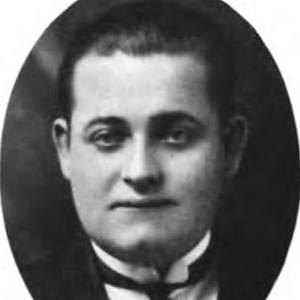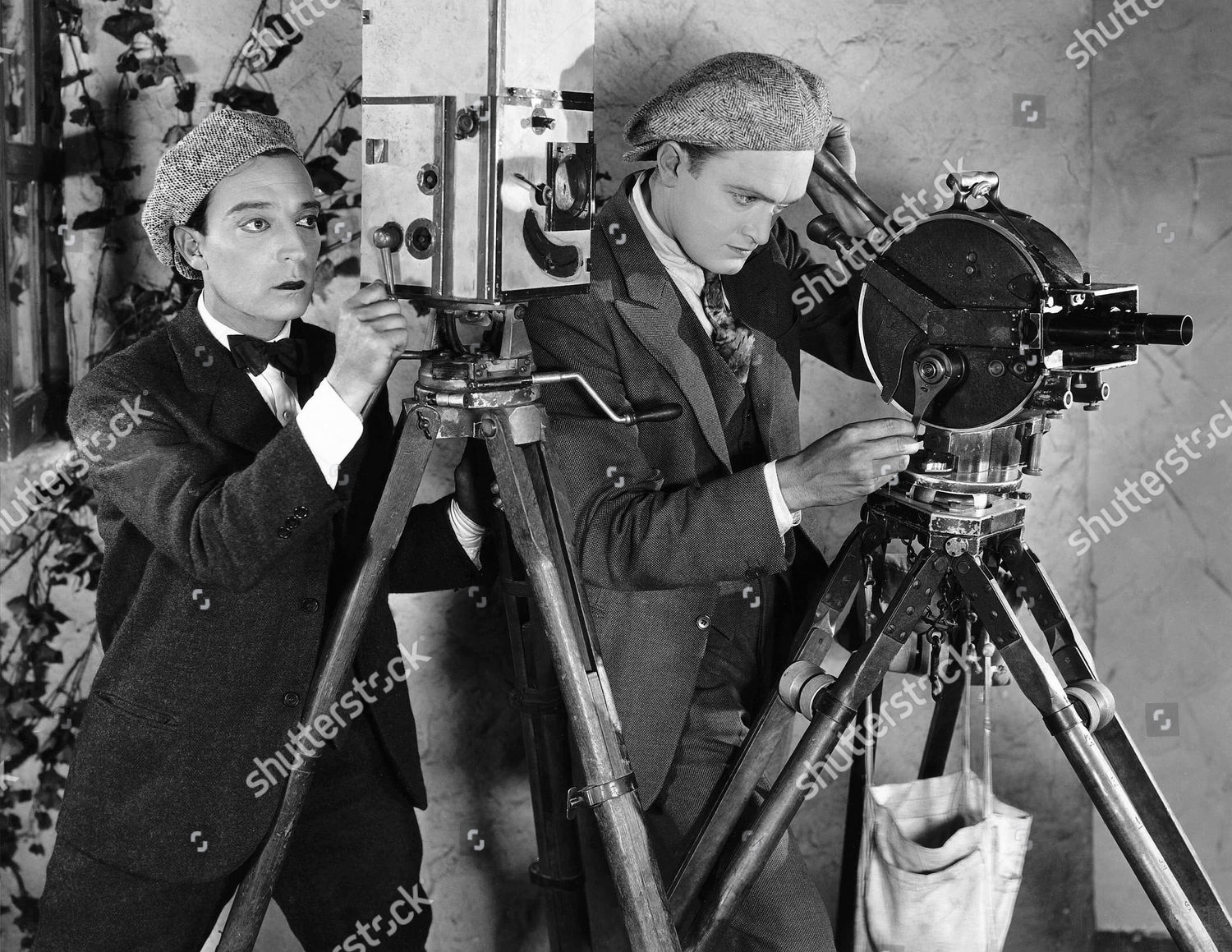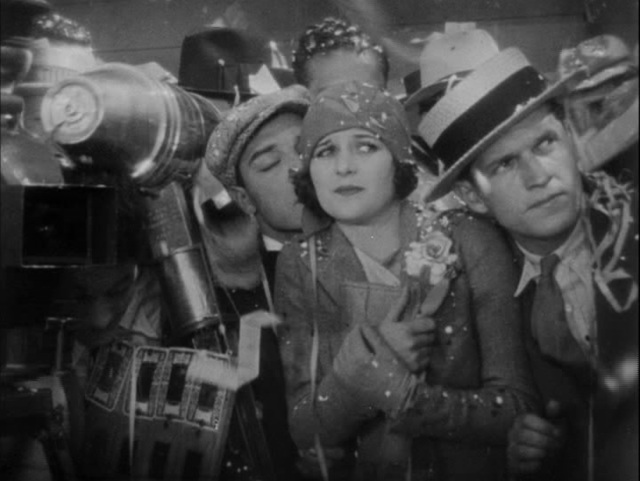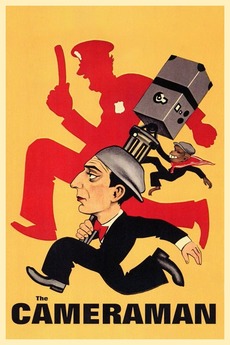
From Wikipedia, the free encyclopedia
Jump to navigationJump to searchThe Cameraman
Theatrical poster
Directed by
Edward Sedgwick
Buster Keaton
Produced by
Buster Keaton
Lawrence Weingarten (uncredited)
Written by
Story:
Clyde Bruckman
Lew Lipton
Titles:
Joseph W. Farnham
Starring
Buster Keaton
Marceline Day
Music by
Arthur Barrow
Cinematography
Reggie Lanning
Elgin Lessley
Edited by
Hugh Wynn
Distributed by
Metro-Goldwyn-Mayer
Release date
September 22, 1928
Running time
67 minutes (8 reels)
Country
United States
Languages
Silent film
English intertitles
The Cameraman is a 1928 American silent comedy film directed by Edward Sedgwick and an uncredited Buster Keaton.[1] The picture stars Keaton and Marceline Day.
The Cameraman was Keaton’s first film with Metro-Goldwyn-Mayer. It is considered by fans and critics to be Keaton still in top form, and it was added to the National Film Registry in 2005 as being deemed “culturally, historically, or aesthetically significant.”[2][3]
Within a little over a year, however, MGM would take away Keaton’s creative control over his pictures, thereby causing drastic and long-lasting harm to his career. Keaton was later to call the move to MGM “the worst mistake of my career.”[4]
Contents
1Plot
2Cast
3Production
4Critical reception
5Honors
6Preservation status
7References
8External links
Plot[edit]
Buster, a sidewalk tintype portrait photographer in New York City, develops a crush on Sally, a secretary who works for MGM Newsreels. To be near her, he purchases an old film camera, emptying his bank account, and attempts to get a job as one of MGM’s cameramen. Harold, an MGM cameraman who has designs on Sally himself, mocks his ambition.
Sally, however, encourages Buster and suggests he film anything and everything. Buster’s first attempts show his total lack of experience. He double exposes or over exposes much of the footage, and the rest is simply no good. Despite this setback, Sally agrees to go out with Buster, after her Sunday date cancels. They go to the city plunge (pool), where Buster gets involved in numerous mishaps. Later, Harold offers Sally a ride home; Buster has to sit in the rumble seat, where he gets drenched in the rain.
The next day, Sally gives him a hot tip she has just received that something big is going to happen in Chinatown. In his rush to get there, he accidentally runs into an organ grinder, who falls and apparently kills his monkey. A nearby cop makes Buster pay for the monkey and take its body with him. The monkey turns out only to be dazed and joins Buster on his venture.
In Chinatown, Buster films the outbreak of a Tong War, narrowly escaping death on several occasions. At the end, he is rescued from Tong members by the timely arrival of the police, led by a cop who had been the unintentional victim of several of Buster’s antics over the last few days. The cop tries to have him committed to the mental hospital, but Buster makes his escape with his camera intact.
Returning to MGM, Buster and the newsreel company’s boss are dismayed to find that he apparently forgot to load film into his camera. When Sally finds herself in trouble for giving Buster the tip, Buster offers to make amends by leaving MGM alone once and for all.
Buster returns to his old job, but does not give up on filming, setting up to record a boat race. He then discovers that he has Tong footage after all; the mischievous monkey had switched the reels. Sally and Harold are speeding along in one of the boats. When Harold makes too sharp a turn, the two are thrown into the river. Harold saves himself, but Sally is trapped by the circling boat. Buster stops filming to jump in and rescues her. The monkey gets behind the camera to film the daring rescue. When Buster rushes to a drug store to get medical supplies to revive her, Harold returns and takes credit for the rescue. The two go off, leaving the broken-hearted Buster behind.
Buster decides to send his Tong footage to MGM free of charge. The boss decides to screen it for Harold and Sally for laughs, but is thrilled by what he sees, calling it the best camerawork he has seen in years. They also see footage of Buster’s boat footage and the monkey’s shot of Buster’s rescue of Sally. The boss sends Sally to get Buster. She tells him he is in for a great reception. Buster assumes a ticker-tape parade is in his honor, whereas it is really for Charles Lindbergh.
Cast[edit]
Buster Keaton as Buster
Marceline Day as Sally Richards
Harold Goodwin as Harold Stagg
Sidney Bracey as Edward J. Blake, the boss
Harry Gribbon as Hennessey, the cop
Josephine the Monkey as the monkey
Uncredited cast
Richard Alexander as one of Buster’s rivals, the ‘big sea lion’
Edward Brophy as man in the bath-house, who insists on sharing Buster’s tiny changing room
Ray Cooke as office worker
Vernon Dent as man in tight bathing suit
William Irving as a photographer
Harry Keaton as the man in the swimming pool
Louise Keaton as the woman in the swimming pool
Charles Lindbergh as himself (archive footage)
Bert Moorhouse as Randall
Production[edit]
On January 26, 1928 Keaton signed a two-year deal with Metro-Goldwyn-Mayer.[5] The deal required 2 films per year from Keaton and paid him $3,000 a week, making him the third highest-paid actor at the studio. Keaton brought most of his own crew with him from his own independent production company. He immediately pitched the idea for The Cameraman to MGM, who paid him $1,250 for it.[6] Keaton later said that the MGM deal was “the worst mistake of my life.”[7]
The film was overseen by producer Lawrence Weingarten. Weingarten and Keaton fought on set and Weingarten called Keaton a child. Keaton was accustomed to complete control over his own productions and was unaccustomed to interference from producers.[8] However MGM’s head of production Irving Thalberg loved the finished film and laughed during screenings of its rushes (a rare display of emotion from Thalberg).[9] 22 writers were assigned to work on it, but Keaton convinced Thalberg to throw out the script and allow him to film it his own way.[10]
The Cameraman would later serve as inspiration for part of the 1950 comedy Watch the Birdie, starring Red Skelton, with Keaton working as a gagman for MGM and serving as an advisor to Skelton.[11] The dressing-room scene in which Buster and another bather attempt to change while being pressed up against each other and getting entangled in one another’s clothes was the inspiration for the stateroom scene in the Marx Brothers‘ 1935 film A Night at the Opera.[12]
Critical reception[edit]
The film was a box office hit, grossing $797,000, and was well-received by film critics. MGM writing department used the film to train new writers as a “perfectly constructed comedy” for decades.[9]
Critic Mordaunt Hall, writing for the New York Times, liked the film and the work of Buster Keaton. He said, “Mr. Keaton’s latest effort is The Cameraman, which is filled with guffaws and grins, the sort of thing with many original and adroitly worked-out gags. But whether they belong to the story is immaterial…There are other sections that are wild and watery, but nonetheless humorous.”[13]
David Robinson wrote that the film “betrays nothing of the struggle and strain that went into its preparation. It is a lucid, beautifully formed dramatic comedy.”[10]
Honors[edit]
In 2005, the film was selected for preservation in the United States National Film Registry by the Library of Congress as being “culturally, historically, or aesthetically significant”.
Preservation status[edit]
The Cameraman was at one point considered a lost film, destroyed in the 1965 MGM vault fire. However, a complete print was discovered in Paris in 1968.[14] Another print, of much higher quality, although missing some footage, was discovered in 1991.[14] The two prints were combined into a version which now is available. The Cameraman was released on Blu-ray and DVD through The Criterion Collection on June 16, 2020.[15]

اسم اصلي The Cameraman
صورة The_cameraman_poster
عنوان الصورة بوستر الفيلم
حجم الصورة

مخرج إدوارد سيدجويك
باستر كيتون
منتج لورانس وينجارتن
باستر كيتون
كاتب كلايد بروكمان
ليو ليبتون
قصة
بطولة باستر كيتون
يلاين داي
هارولد جودوين
موسيقى
مونتاج
استديو
موزع مترو غولدوين ماير مترو جولدن ماير
تاريخ الصدور تاريخ فيلم 1928 9 22
مدة الفيلم 67 دقيقة
البلد الولايات المتحدة
لغة الفيلم فيلم صامت
كتابة داخلية إنجليزية
جوائز
ميزانية
الإيرادات
رمز دليل الأفلام
الرمز 0018742
السينما
المصور إنج The Cameraman هو فيلم فيلم كوميدي كوميدي فيلم رومانسي رومانسي أمريكي فيلم صامت صامت انتج في سنة 1928، أخرجه إدوارد سيدجويك و باستر كيتون * imdb 0018742 ، الفيلم بطولة باستر كيتون و يلاين داي وهارولد جودوين.
المصور هو أول فيلم لباستر كيتون مع مترو غولدوين ماير مترو جولدين ماير وقد إعتبر الجمهور والنقاد أن كيتون لا يزال في قمة مستواه، ورغم ذلك وبعد ما يزيد قليلًا عن العام إنتزعت إم جي إم سيطرة كيتون الإبداعية على أفلامه مما تسبب في ضرر شديد وطويل الأمد على مسيرته الفنية، وقد علق كيتون في وقت لاحق على إنتقاله إلى إم جي إم قائلًا أسوأ خطأ في مسيرتي .Buster Keaton web site.
المصور كان خلال نقطة معينة يعتبر فيلم مفقود فيلماً مفقوداً ، ولكن تم إكتشاف طبعة كاملة به في باريس في سنة 1968، وطبعة أخرى ذات جودة أعلى بكثير، إلا أن بعض اللقطات كانت مفقودة وقد اكتشفت هذه اللقطات في سنة 1991، وتم دمج الطبعتين في طبعة واحدة بأعلى جودة ممكنة وعرضت في جميع أنحاء العالم.
المصور (فيلم)
من ويكيبيديا
المصور
The Cameraman
The cameraman poster.jpg
بوستر الفيلم
معلومات عامة
الصنف الفني
كوميديا رومانسية — كوميديا درامية — سينما صامتة
المواضيع
Incomplete list.svg˂
تاريخ الصدور
22 سبتمبر 1928
مدة العرض
67 دقيقة
اللغة الأصلية
فيلم صامت
كتابة داخلية إنجليزية
العرض
أبيض وأسود
البلد
الولايات المتحدة
موقع التصوير
لوس أنجلوس
الجوائز
سجلات الأفلام الوطنية (2005)
الطاقم
المخرج
إدوارد سيدجويك
باستر كيتون
الكاتب
كلايد بروكمان
ليو ليبتون
السيناريو
Clyde Bruckman (en)
البطولة


باستر كيتون
مارسيلاين داي
هارولد جودوين
التصوير
Elgin Lessley (en)
صناعة سينمائية
الشركة المنتجة
مترو غولدوين ماير
المنتج
لورانس وينجارتن
باستر كيتون
التوزيع
مترو جولدن ماير
*
المصور (بالإنجليزية: The Cameraman) هو فيلم كوميدي رومانسي أمريكي صامت انتج في سنة 1928، أخرجه إدوارد سيدجويك وباستر كيتون، الفيلم بطولة باستر كيتون ومارسيلاين داي وهارولد جودوين.
المصور هو أول فيلم لباستر كيتون مع مترو جولدين ماير وقد اعتبر الجمهور والنقاد أن كيتون لا يزال في قمة مستواه، ورغم ذلك وبعد ما يزيد قليلًا عن العام إنتزعت إم جي إم سيطرة كيتون الإبداعية على أفلامه مما تسبب في ضرر شديد وطويل الأمد على مسيرته الفنية، وقد علق كيتون في وقت لاحق على انتقاله إلى إم جي إم قائلًا “أسوأ خطأ في مسيرتي”.
المصور كان خلال نقطة معينة يعتبر فيلماً مفقوداً، ولكن تم اكتشاف طبعة كاملة به في باريس في سنة 1968، وطبعة أخرى ذات جودة أعلى بكثير، إلا أن بعض اللقطات كانت مفقودة وقد اكتشفت هذه اللقطات في سنة 1991، وتم دمج الطبعتين في طبعة واحدة بأعلى جودة ممكنة وعرضت في جميع أنحاء العالم.
طاقم التمثيل
باستر كيتون – باستر
مارسيلاين داي – سالي ريتشاردز
هارولد جودوين – هارولد ستاج
سيدني براسي – إدوارد جي بلاك، المدير
هاري جريبون – هينيسي، الشرطي
ريتشارد ألكسندر – أسد البحر
إدوارد بروفي – رجل في غرفة تغيير الملابس
راي كوك – رجل يعمل في المكتب
ڤيرنون دانت – رجل في مايوه ضيق
ويليام إيرفينج – مصور
هاري كيتون – رجل في حمام السباحة
لويس كيتون – امرأة في حمام السباحة
تشارلز ليندبيرج – نفسه (لقطة أرشيفية)
بيرت مورهاوس – راندال
القرد – القرد
التقديرات
في عام 2005 تم اختيار الفيلم للحفظ في السجل الوطني السنيمائي من قبل مكتبة الكونجرس في أمريكا باعتباره “ذو أهمية ثقافيًا وتاريخيًا أو جماليًا”.




